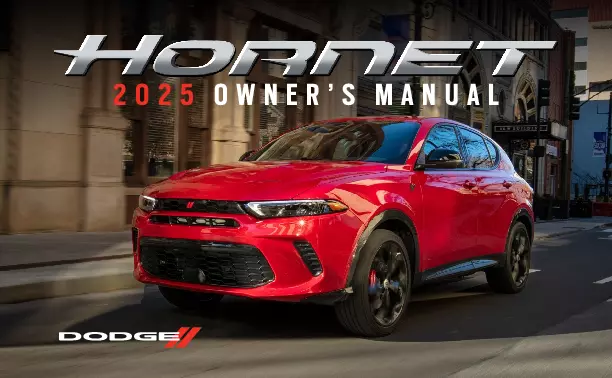2025 Dodge Hornet Owner's Manual

Table of Contents
2025 Dodge Hornet Overview
Introduction
The 2025 Dodge Hornet emerges as a thrilling contender in the compact SUV segment, blending striking design, exhilarating performance, and cutting-edge technology. With its bold stance and aggressive lines, the Hornet captures attention on any road while embodying the spirit of the Dodge brand. This model takes a significant step forward, integrating modern styling with a nod to its performance heritage, making it an exciting choice for adventure-seeking drivers.
Powertrains
The 2025 Dodge Hornet offers a choice of two impressive powertrains catering to diverse driving preferences. The base model is powered by a spirited 2.0-liter turbocharged inline-4 engine, delivering 270 horsepower and 295 lb-ft of torque, ensuring lively acceleration and agile handling. For those seeking a more exhilarating experience, the Hornet R/T trim boasts a hybrid powertrain combining a 1.3-liter turbocharged engine with electric motors. This hybrid setup offers a remarkable 300 horsepower while providing exceptional fuel efficiency, making performance environmentally friendly.
Trims
The Dodge Hornet is available in several distinct trims, including the GT, R/T, and the fully-loaded Hornet GT Plus. Each trim level introduces unique features and configurations, ensuring that drivers can choose their perfect fit. The GT model emphasizes performance with sport-tuned suspensions, while the R/T trim showcases sustainability without compromising on power. The GT Plus elevates luxury with added technological advancements and premium materials, creating a refined driving experience.
Features
The 2025 Dodge Hornet is packed with innovative features, including a touchscreen infotainment system, Apple CarPlay and Android Auto compatibility, and advanced safety technologies like adaptive cruise control and lane-keeping assist. Ergonomically designed seats, ample cargo space, and customizable ambient lighting contribute to an inviting interior atmosphere. Additionally, the available premium audio system ensures an immersive sound experience for all passengers.
Owner's Manual
The owner's manual for the 2025 Dodge Hornet serves as an invaluable resource for drivers, providing comprehensive information on vehicle operation, maintenance schedules, and safety protocols. It includes detailed instructions on utilizing all technological features, ensuring owners can maximize their driving experience. Clear diagrams, FAQs, and troubleshooting tips are also embedded within, making it user-friendly and informative, helping owners keep their Hornet in peak condition.
User manual download
The Dodge Hornet owner manual for the 2025 model year is to be found in PDF downloadable format on this page. The owner manual for the model year 2025 is free and in English, but the repair manuals are usually not easy to get and may cost more.
Manual Questions
Fill the form below and someone will help you!
